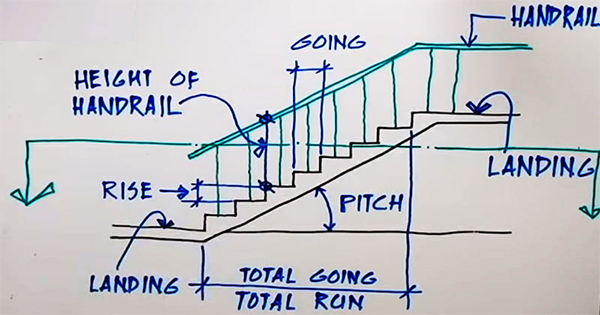Some elementary details of a staircase

This construction video tutorial sheds light on the different parts of staircase as well as some elementary details and illustrations.
A flight of staircase contains various horizontal and vertical surfaces. The vertical surface is known as the riser and the horizontal surface is known as tread. By integrating both of them a step is formed. With the combination of series of steps, it becomes easier to move from one level to another.
The vertical dimension that is enclosed in one step is known as rise. The horizontal dimension that is enclosed in one step is known as going.
A staircase mounts at an angle from the horizontal level and it is called the pitch of the staircase. Up to a highest of 45 degree is allowed for pitch.
While mounting from starting level to the end level the distance covered horizontally by the staircase is described as total going or total run.
On arrival the next level, one puts its steps first on the landing and each staircase contains a handrail mounting together with it. One who intends to mount upward can utilize it as a support. The height of the handrail is calculated with the intersection point of the riser and tread.
To get more details, watch the following video tutorial.
Video Courtesy : Nakul Dhagat

